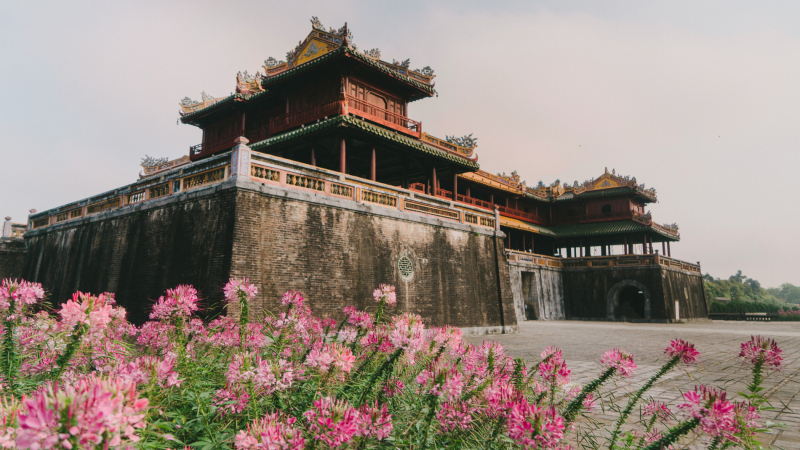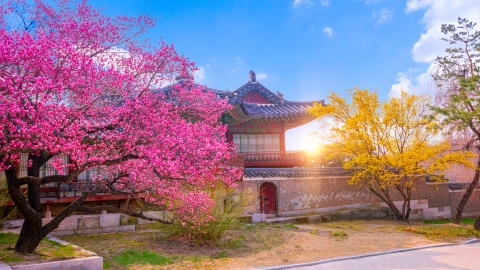After a four-year restoration journey and an investment of up to 120 billion VND, Kien Trung Palace, one of the most unique architectural works of Hue Imperial City, officially opened to visitors on the first day of the Lunar New Year. The palace, which has witnessed the ups and downs of history, is now back to its original beauty, ready to welcome visitors to explore and admire.
The palace was built in 1921 and completed in 1923 under the reign of King Khai Dinh. Kien Trung Palace is one of the five important structures located on the main axis of the Imperial City along with Thai Hoa Palace, Can Chanh Palace, Can Thanh Palace, and Khon Thai Palace. In 1947, due to war, the structure collapsed completely, leaving only the foundation.

Kien Trung Palace - a unique palace that not only has the majesty and grandeur of the Nguyen Dynasty Royal Palace, but also has the atmosphere of the 20th century with touches of Western architecture.
This is a particularly important structure in the architectural system of the Nguyen Dynasty's palaces. The main floor of the structure has 13 porch doors (the middle room has 5 doors, the two side rooms each have 3 doors, the two corners of the palace each have 2 more doors protruding); the upper floor is the attic, built in the same format as the main floor.
The palace was in ruins for 72 years until a restoration project was launched. The project started in 2019 and is now almost complete. The project covers an area of over 3,800 square meters. The construction units have kept the existing foundation structure intact, limiting interference with the original elements of the relic.

Kien Trung Tower was built under King Khai Dinh's reign with the word "Kien" meaning to build, establish, the word "Trung" meaning upright, unbiased.
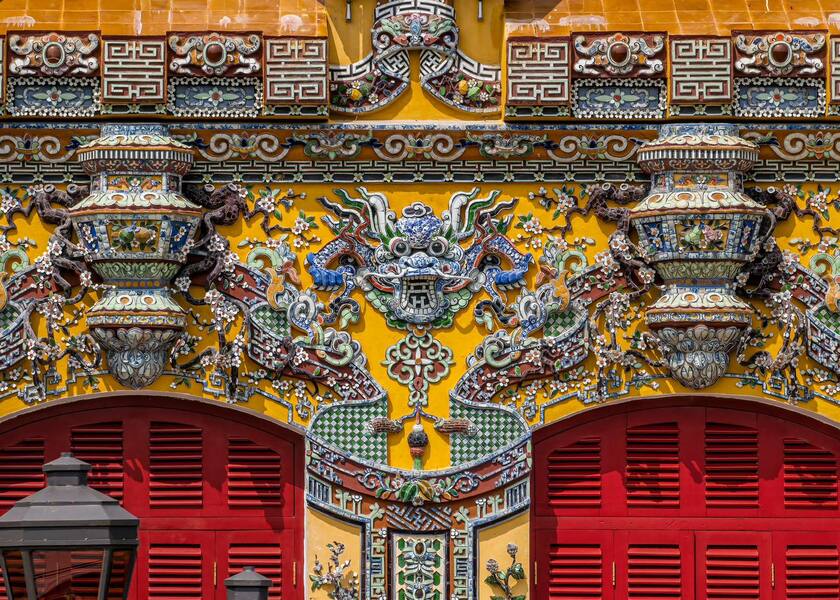
According to old documents, at the original location of this construction, there were previously two other architectural works, which were Minh Vien Lau, also known as Minh Vien Tower (1827) and Du Cuu Lau, also known as Du Cuu Tower (1913).
The project includes items of reinforcement, restoration of the surrounding wall, railing system, courtyard including front and back garden, steps; restoration of Kien Trung Tower (Kien Trung Lau) 2 floors, about 14m high, construction area about 975m2. In addition, the project also repairs small surrounding works such as: Fountain, cannon, guard house, green tree system, preservation of the foundation of Dong Cung Lau, Royal Study Room, Military Guard Room and Royal Coffee Room...
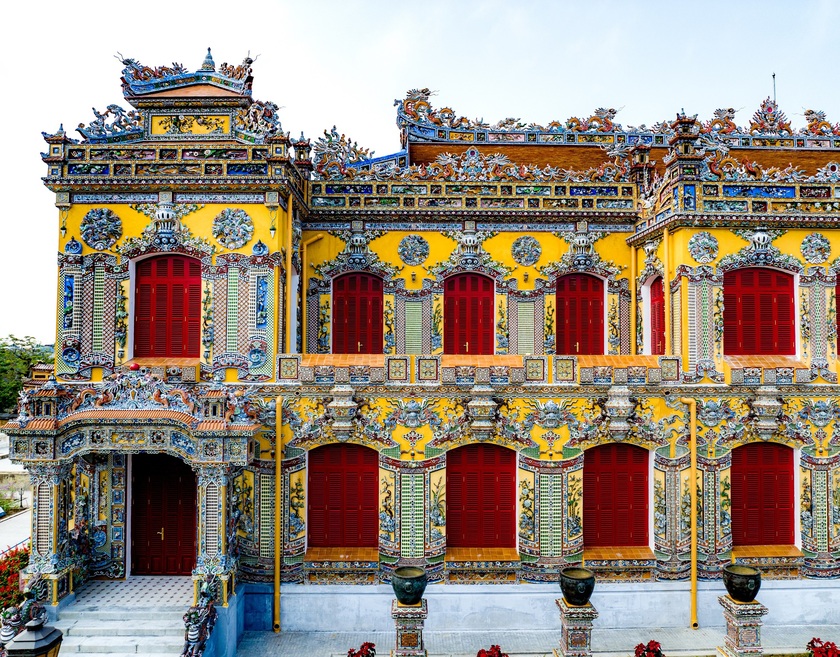
This place attracts many tourists to visit during the Tet holiday.
To create a spring space, in addition to the restored architecture, the Hue Monuments Conservation Center planted many flower gardens around. Also on the occasion of the New Year of the Snake 2025, the Hue Monuments Conservation Center introduced a photo collection of traditional Hue Nhat Binh ao dai in the setting of ancient tombs and temples in the ancient capital.
Ao Nhat Binh, a masterpiece of royal tailoring, was once a symbol of power and nobility. Only concubines and princesses were allowed to wear these ao dai. Every stitch and every pattern was meticulously hand-embroidered, demonstrating the power and luxury of the aristocracy.
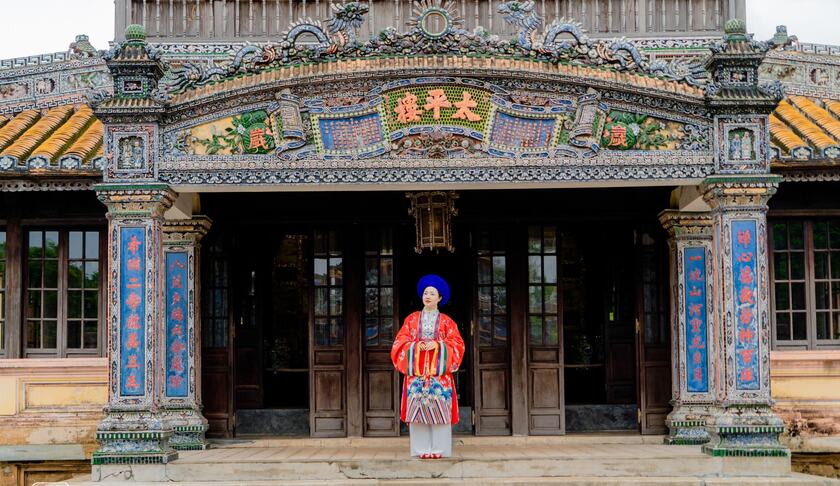
The Nhat Binh shirt has its prototype from the Ming Dynasty's Doi Kham Phi Phong shirt.
Adopting and improving the Phi Phong shirt model from abroad, Nguyen Dynasty artisans have constantly created and improved, creating a masterpiece with its own mark: Nhat Binh shirt. With a unique rectangular collar design, the two flaps of the shirt are fixed with sophisticated straps, when worn, the front chest is joined together to form a rectangle, hence the name Nhat Binh shirt.
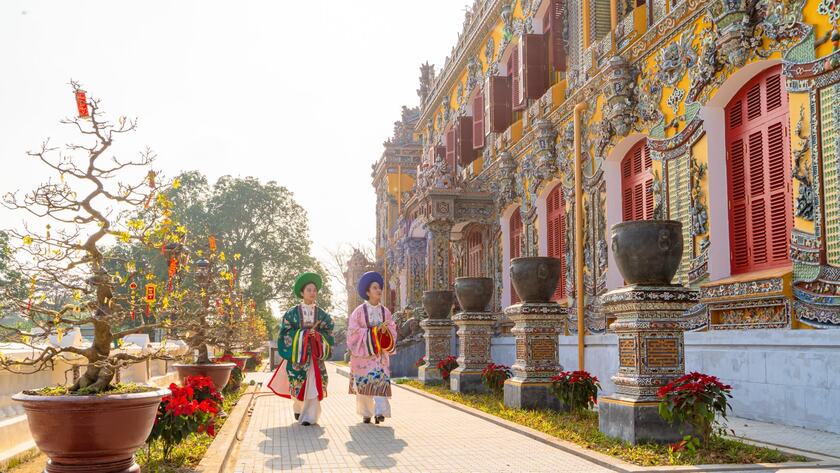
The name "Nhat Binh" comes from the decorative pattern on the shirt forming a large rectangle in front of the chest.
In the early Nguyen Dynasty, the Nhat Binh shirt was often paired with a white dress and a phoenix hat depending on rank. But from the late 19th century onwards, the Nhat Binh shirt was paired with white pants and a large-brimmed turban. And this form is still preserved to this day, at the same time the colors of the Nhat Binh shirt are also richer and more diverse.
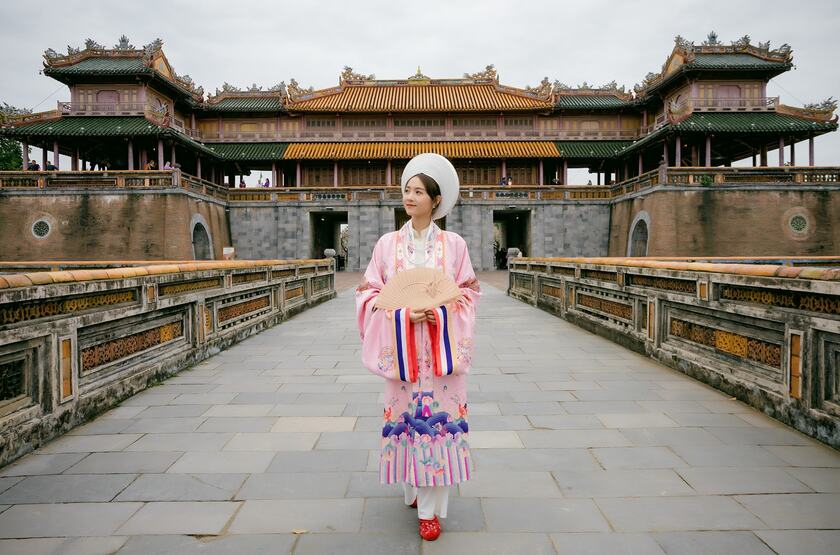
According to "Kham Dinh Dai Nam Hoi Dien Su Le" (1807), each rank in the palace: Queen Mother, Queen, Concubine, Princess... depending on the rank, the costumes as well as the colors and patterns have differences to clearly distinguish.

In addition to Kien Trung Palace, Thai Hoa Palace also welcomed visitors during the repair period. People watched martial arts outside Thai Hoa Palace. According to the Thua Thien Hue Department of Tourism, during the first three days of Tet, the relics managed by the Hue Monuments Conservation Center had about 65,000 to 68,000 visitors, including about 12,000 international visitors. The whole province from the 28th of Tet to the 6th day is estimated to reach 100,000 visitors.







